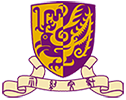Lecture 4
Knots Theory
The Mathematics of Entanglement
Knots have been closely related to human beings since the existence of human cultures. There are many archaeological findings showing the use of knots as an early form of human language. Throughout history, knots have been used as a practical tool by sailors, scouts, and others. Furthermore, knots also present themselves in more subtle ways. One of the earliest model of atomic structure used knotted structures. While this is now known as incorrect, scientists discover that knots play an important role in the study of DNA. Also, most of us have played a game of separating two objects which originally intertwine as one piece. In fact, knots and links have been dually a practical tool and an intriguing game in human experiences.
Although human beings had recognized the value of knots very early, in-depth studies on them were only formulated until early 20th century. The early studies were mainly listings of different pictures of knots, like pages in a sailor handbook. By the beginning of the 20th century, a better knowledge of topology is developed. From then on, the study of knots and links has become an important branch of topology. The central question is how two different knots are distinguished. This turns out to be very difficult and there is not a complete answer. Nevertheless, in the pursuit of the answer, many important mathematical tools were discovered, which are very useful in other branches of mathematics and science nowadays.
A Brief Description
It may be surprising how the study of knots becomes a subject of symbols and formulas. Knots are traditionally related to sailors and scouts. However, they are also important objects in biochemistry, mechanics, and mathematics. Mathematicians have studied knots for many years just like other geometric objects such as triangles and circles. The only difference is the structure of knots is much more complicated, and it involves special knowledge in mathematics, called topology. On the other hand, the study of knots also contributes to the development of other branches of mathematics as well as other sciences. In this talk, we will try to present the basic ideas of the study of knots and let the audience to see how mathematics treat these objects with or without equations.
- Speaker: Prof. Thomas K. K. Au (Mathematics Department, CUHK)
- Date: April 20 (Saturday), 1996
- Time: 10:00 - 11:00a.m. and 2:00 - 3:00p.m.
- Veune: Sir Run Run Shaw Hall
- Language: Cantonese



